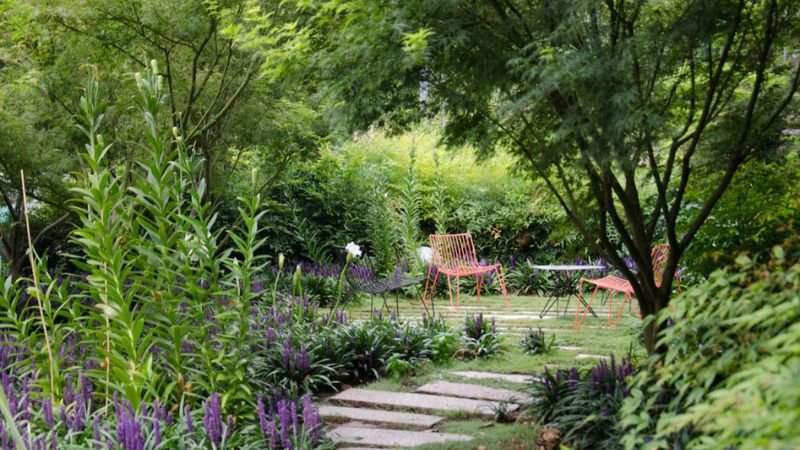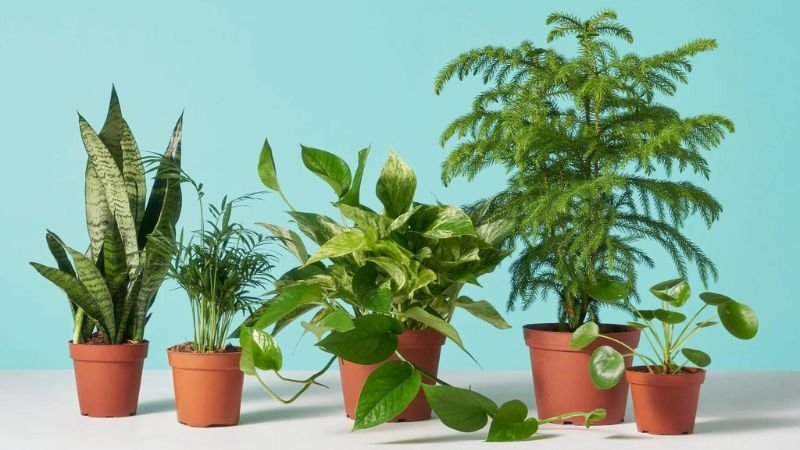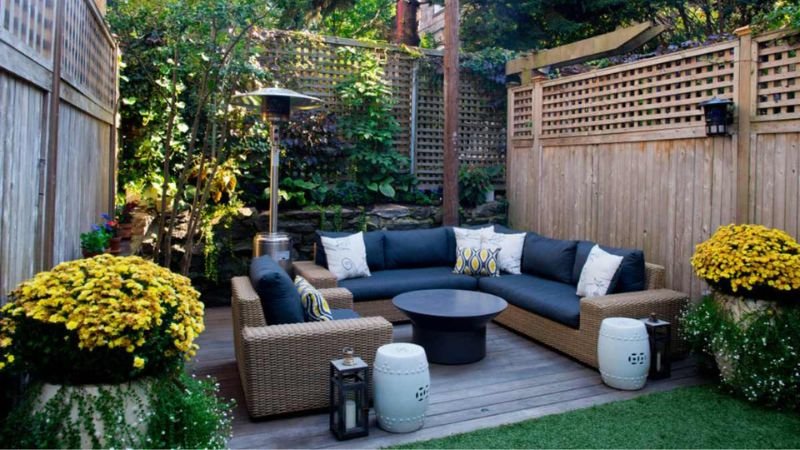Finding the right plants for shady areas of your garden can be a challenge, but with the right selection, these spots can become lush, colorful, and full of life. Whether you have large trees, shaded patios, or low-light corners, many stunning plants thrive without direct sunlight. In this blog, we’ll explore the top 10 shade plants that can add texture, vibrant foliage, and blooms to your garden. From classic ferns to colorful hostas, these plants will brighten your space while thriving in the shade. Let’s dive into these beautiful options and transform your garden!
Top 10 Shade Plants To Brighten Your Garden
1. Hostas
Hostas are perhaps one of the most popular and versatile shade-loving plants available. They are known for their large, lush, and textured leaves that come in various shades of green, blue, yellow, and even white. Some varieties even boast variegated foliage, adding extra color to shaded areas. Hostas thrive in partial to full shade, making them ideal for under trees or in garden corners that don’t receive much sunlight. Aside from their beautiful foliage, some hostas produce delicate lavender or white flowers in summer, adding a subtle charm to your garden. While hostas are low-maintenance, it’s important to watch for slugs and snails, as they can sometimes damage the leaves.
Also Read:- How To Landscape With Rocks And Stones
2. Ferns
Ferns are classic shade plants that can transform any garden into a lush, green retreat. With their intricate fronds and soft, feathery appearance, they add a woodland vibe to shaded areas. Ferns are incredibly diverse, with types like the lady fern, ostrich fern, and Japanese painted fern offering different textures and colors. Most ferns prefer moist, well-drained soil and thrive in partial to full shade, making them excellent choices for darker garden corners or under tree canopies. They are also highly resilient and can tolerate a variety of growing conditions. With little maintenance required, ferns are a perfect addition to any low-light garden.
3. Astilbes
Astilbes are known for their plume-like flowers that bloom in shades of pink, red, white, and purple. These perennial plants thrive in shady areas with moist, well-drained soil. Their feathery flowers add a splash of color to your garden from late spring to early summer, making them a perfect choice for filling shady borders and beds. Astilbes are also deer-resistant, making them ideal for gardens in areas where wildlife is prevalent. Their fern-like foliage remains attractive even after the flowers fade, providing year-round texture. Astilbes prefer a bit of morning sun but can tolerate full shade, especially in warmer climates.
4. Heucheras (Coral Bells)
Heucheras, commonly known as Coral Bells, are prized for their colorful foliage. With leaves ranging from deep purples to bright lime greens and even metallic silvers, heucheras can add vibrant color to shaded parts of your garden. These perennials are easy to grow and thrive in partial to full shade. While their foliage is the main attraction, heucheras also produce delicate, bell-shaped flowers in the summer that attract hummingbirds and pollinators. They prefer well-drained soil and can tolerate dry conditions, making them a versatile choice for shady areas. Heucheras are also excellent for adding contrast to a garden bed, especially when paired with other shade plants like hostas or ferns.
5. Hellebores
Hellebores, often called Lenten roses, are a favorite among shade gardeners for their early spring blooms. These hardy perennials bloom in shades of white, pink, purple, and even green, often when other plants are still dormant. Their cup-shaped flowers and leathery, evergreen foliage make them a striking addition to any garden. Hellebores thrive in partial to full shade and prefer rich, well-drained soil. Once established, they are incredibly low-maintenance and drought-tolerant. Hellebores are also deer- and rabbit-resistant, making them a reliable choice for gardens where wildlife is an issue. Their long-lasting blooms and resilient nature make them a must-have for shady areas.
6. Bleeding Hearts
Bleeding Hearts are known for their heart-shaped flowers that dangle from arching stems, creating a romantic and whimsical look in shaded gardens. Their pink or white blooms appear in early spring and can last into early summer. These perennials thrive in partial to full shade and prefer moist, well-drained soil. Bleeding Hearts are perfect for woodland gardens or shaded borders, adding a pop of color and unique texture. While they tend to go dormant in the heat of summer, their striking early-season blooms more than make up for their temporary absence. Pairing them with late-blooming shade plants like hostas or ferns can ensure continuous garden interest.
7. Toad Lilies
Toad Lilies are unique shade plants that bloom in late summer to early fall, when many other plants have finished their season. Their small, orchid-like flowers come in shades of white, purple, and pink, often with speckled petals. Toad Lilies thrive in full to partial shade and prefer moist, well-drained soil. They are ideal for adding interest to a shady garden during the cooler months. Despite their delicate appearance, Toad Lilies are quite hardy and can withstand colder temperatures. Their intricate blooms are also a favorite of pollinators like bees and butterflies, making them a great addition to wildlife-friendly gardens.
8. Lungwort (Pulmonaria)
Lungwort is a versatile and attractive perennial that thrives in shaded areas. Its foliage is often spotted or speckled with white or silver, which adds visual interest even when the plant is not in bloom. Lungwort produces clusters of small, bell-shaped flowers in early spring, with blooms that shift from pink to blue as they mature. It likes moist, well-drained soil and grows well in shade that ranges from moderate to full. Lungwort is also deer-resistant and can handle colder climates, making it a durable and low-maintenance choice for shade gardens. Its long-lasting foliage can be paired with ferns or hostas for a textured, layered look.
9. Japanese Forest Grass (Hakonechloa)
Japanese Forest Grass is a graceful, ornamental grass that adds movement and texture to shaded garden spaces. Its arching, bamboo-like foliage comes in shades of green, yellow, or variegated varieties, creating a soft, cascading effect. Japanese Forest Grass thrives in partial to full shade and prefers moist, well-drained soil. It’s a great option for softening the edges of paths, borders, or containers in shaded areas. While slow-growing, this grass is low-maintenance and provides year-round interest with its vibrant foliage, which turns golden in the fall. It pairs well with other shade plants like ferns and hostas for a harmonious, textured garden.
Also Read:- How To Create a Low Maintenance Landscape
10. Brunnera (Siberian Bugloss)
Brunnera, also known as Siberian Bugloss, is a stunning shade plant prized for its heart-shaped, silver-veined leaves. Its foliage provides year-round interest, while delicate blue flowers resembling forget-me-nots bloom in the spring. Brunnera thrives in partial to full shade and prefers moist, well-drained soil. It’s an excellent ground cover for shaded areas, adding a pop of color and texture to garden beds or borders. Brunnera is also deer-resistant and tolerates colder climates, making it a resilient choice for a variety of garden settings. Its eye-catching foliage pairs beautifully with other shade plants like astilbes and ferns, creating a dynamic and visually appealing garden.
Conclusion
Creating a vibrant garden doesn’t require constant sunlight. With these top 10 shade plants, you can bring color, texture, and vitality to even the darkest corners of your outdoor space. Whether you prefer lush greenery or blooming perennials, there’s a shade plant that will suit your needs and flourish in low-light areas. Happy gardening!
FAQs
What are the best shade plants for beginners?
Hostas and ferns are great for beginners as they are low-maintenance and thrive in shady areas.
Can shade plants survive in full shade?
Yes, many shade plants like ferns, astilbes, and hellebores can thrive in full shade without direct sunlight.



